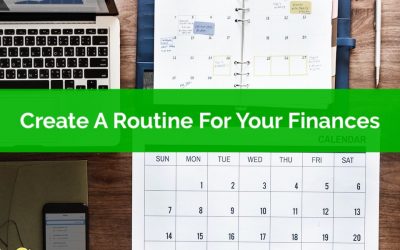Thank you for joining the waitlist!
You’re on the list for early access!
We will contact you via email when we’re ready for you to start your self-directed financial plan. In the mean time here is a quick preview…
Check out our latest blog posts…
What Is An ETF? And How Do They Work?
ETFs have taken over the world of investing. Everyone is getting behind ETF investing, from DIY investors to Warren Buffet, from robo-advisors to huge institutional investors. But what is an ETF? What does ETF stand for? And how do they work?
ETF stands for Exchange Traded Fund… what that means is that it’s a collection of investments, stocks, bonds etc, and those investments are grouped together into one fund that you can purchase and sell on the stock exchange.
This is slightly different than mutual funds. Mutual funds also hold a collection of investments but you purchase them through the fund provider and at a set price at the end of the day based on how much the fund is worth.
The difference is subtle but it matters, and I’ll explain why.
ETFs have grown in popularity over the last 10-years. One of those reasons has to do with low-cost index investing. Index investing is when a fund (could be an exchange traded fund, or it could be a mutual fund) tries to replicate the returns of a particular index. And an index could be anything.
For example there is an S&P 500 ETF that aims to replicate the returns of the S&P 500, a collection of the 500 largest companies in the US. An index could also be a bond index, in this case a bond ETF aims to replicate the return of a certain type of bond, maybe corporate bonds, maybe government bonds, maybe high-risk/junk bonds etc.
The amazing thing about ETFs, especially index ETFs is how little they cost, how highly diversified they are, and how simple they makes investing for the average person.
But how do ETFs work?
It’s a great question.
The 4 Most Important Keystone Habits In Personal Finance
There are certain habits that make things way easier, these habits are more important than others, these habits are called keystone habits. Keystone habits create a foundation from which you can make even bigger and more positive changes. Mastering the right keystone habit can transform your life.
We have habits everywhere in our lives and we build new habits all the time (both good and bad!). We use these habits to support our daily lives. These habits make our lives easier, you don’t have to think about what you’re doing, it just comes naturally.
Having a solid keystone habit will create a foundation from which you can make even bigger changes. Eating right, getting regular exercise, sleeping eight hours per night, these are all keystone habits that create a solid foundation from which you can make even more positive changes in your life.
The best part about keystone habits is that once they’re established they don’t take much effort to maintain.
When it comes to personal finance there are 4 important keystone habits. Once these habits are established they create a ripple effect through the rest of your personal finances.
If you practice these four keystone habits then there is nothing you can’t achieve with your personal finances!
Keep Things Simple: Create A Routine For Your Finances
Routines add structure and discipline to our lives. They make things easier. When we’re in a good routine things seem faster, easier and more efficient. We know exactly what to expect and how to do it.
Creating a routine for your finances is a great way to add structure and discipline to your financial life. It makes you more efficient and happy with your finances (and who doesn’t want that?).
Anyone who has spent too much time managing their finances knows how quickly you can feel burnt out. This is called budget fatigue and it’s a very real problem. It’s when you spend so much time and effort managing your money that you end up making worse spending decisions because you’re just so tired.
Having a routine helps you manage your finances more efficiently. It’s one of the easiest ways to improve your finances for the long term. Your routine can include things like budgeting, investing, saving etc.
For years and years, we’ve been on a 4-month personal finance routine. We review our finances only three times per year. How’s that for efficient!
We review our finances once in mid-January, once in mid-May and then once in mid-September.
During these reviews, we sit down and look at our spending, our budget, our investments, our contributions and we see if we need to rebalance or not. We also talk about the next 4-12 months, what special expenses we can expect, and if we should make changes to our regular budget.
During these financial “check-ins” we also review our long-term financial goals. We check to see if we’re on track or if we need to make changes to either our expectations or our savings rate.
Having this routine has improved our personal finances immensely and I recommend everyone create a routine for their finances so you can experience these benefits too.
There are four main ways our personal finance routine has helped improve our finances…



